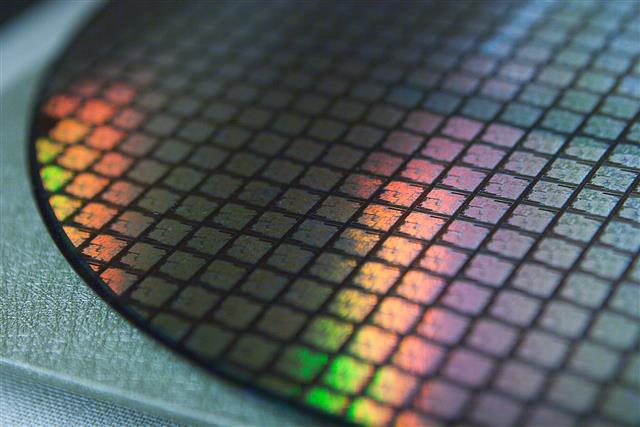AI Computing at the speed of light

Penn engineers have developed a new chip that uses light waves instead of electricity to perform the complex math essential to training AI. The chip has the potential to radically accelerate computers' processing speed while also reducing their energy consumption. The design of the silicon photonics (SiPh) chip is the first to bring together the pioneering research of Benjamin Franklin Medal Laureate and H. Nedwill Ramsey Professor Nader Engheta in manipulating materials at the nanoscale to perform mathematical calculations using light—the fastest possible means of communication - with the SiPh platform using silicon, the cheap and abundantly available element already used to mass-produce computer chips.
![]()
The interaction between light waves and matter represents a possible path to developing computers that overcome the limitations of today's chips, which are based on essentially the same principles as chips from the earliest days of the computer revolution in the 1960s. In an article in Nature Photonics, Engheta's group, together with Firooz Aflatouni, associate professor of electrical and systems engineering, describes the development of the new chip.
"We decided to join forces and take advantage of the fact that Aflatouni's research group has pioneered nanoscale silicon devices" says Engheta. There are many challenges associated with the development of this new type of chip. One of the biggest challenges is finding a way to control the movement of the light waves on the chip. To this, Engheta explains: "Instead of using a silicon slab of uniform height, you make the silicon thinner, down to 150 nanometers," but only in specific regions.

These variations in height - without the addition of other materials - provide an opportunity to control the movement of light waves through the chip, as the height variations can be distributed to cause light to scatter in specific patterns. It allows the chip to perform mathematical calculations at the speed of light. Since the new chip uses essentially the same materials as existing chips, Aflatouni says, this design is already ready for commercial applications and could potentially be adapted for use in graphics processing units (GPUs), whose demand has increased in line with widespread interest in to develop new AI systems. "They can use the silicon photonics platform as an add-on," says Aflatouni, "and then you could speed up training and classification." In addition to faster speed and lower energy consumption, Engheta and Aflatouni's chip also has privacy benefits: since many calculations can take place simultaneously, there will be no need to store sensitive information in the computer's working memory, making a future computer powered by such technology virtually unhackable. "No one can hack into a non-existent memory to access your information," says Aflatouni.
Latest processor - cpu
-
31 Octprocessor - cpu
-
16 Sepprocessor - cpu
AMD Ryzen AI 7 PRO 360 spotted
-
04 Sepprocessor - cpu
Intel scores big AI chip customer
-
04 Sepprocessor - cpu
Exclusively-Intel manufacturing store drawers
-
29 Augprocessor - cpu
Big performance boost for Ryzen CPUs
-
28 Augprocessor - cpu
Intel shares could fall in battle with TSMC and NV
-
28 Augprocessor - cpu
AMD is claimed to have been hacked
-
27 Augprocessor - cpu
Intel presents Lunar Lake, Xeon 6, Guadi 3 chips
Most read processor - cpu
Latest processor - cpu
-
31 Octprocessor - cpu
AMD will launch the Ryzen 7 9800X3D on November 7
-
16 Sepprocessor - cpu
AMD Ryzen AI 7 PRO 360 spotted
-
04 Sepprocessor - cpu
Intel scores big AI chip customer
-
04 Sepprocessor - cpu
Exclusively-Intel manufacturing store drawers
-
29 Augprocessor - cpu
Big performance boost for Ryzen CPUs
-
28 Augprocessor - cpu
Intel shares could fall in battle with TSMC and NV
-
28 Augprocessor - cpu
AMD is claimed to have been hacked
-
27 Augprocessor - cpu
Intel presents Lunar Lake, Xeon 6, Guadi 3 chips






